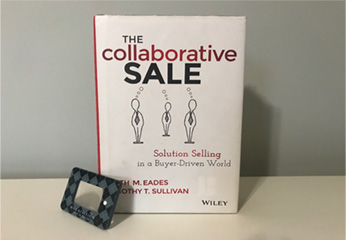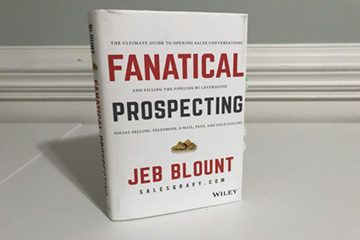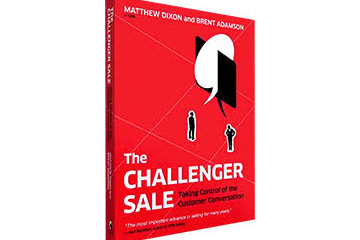Cheryl’s take…
You know those books with curled covers and bent corner pages? The ones on your bookshelf that you reference again and again? This WSJ bestseller is one of those for me, even though on first reading I found myself getting lost in the way the book was organized.
Despite tripping over the format at times, I found many great reminders and insights in this book. I’ve divided them into 2 categories for this review.
THINGS YOU LIKELY KNOW YOU SHOULD NOT DO during a presentation, but probably still do at times…
- Use Bullets. Replace with visuals and your presentations will improve dramatically.
- Include lots of text on your slides. Who are you kidding here? The only person this possibly helps is the presenter who didn’t take the time to learn the material and needs to read the slides to his/her audience. Put the text in your notes and LEARN YOUR MATERIAL.
- Read your slides. (See #2) A better way is to Tell the Story behind the information. Of course this requires you to LEARN YOUR MATERIAL. Are you sensing a pattern here?
- Load up on Jargon and Buzzwords. Keep things simple and remember it’s not about you showing off your knowledge of the latest industry- and/or corp-lingo, it’s about the audience! Tell Your Story clearly and conversationally and in a way that “answers the one question that matters most” to your listeners… “Why should I care?”
THINGS YOU MAY KNOW could help improve your presentations, but likely don’t always make time for…
Disclaimer alert – bullets are okay when you are using them in a written doc 🙂
- Plan Your Story.
- Map out how you will tell your story BEFORE you open any presentation software
- Figure out how to answer the “What’s In It For Them” question
- Use “Rule of Three” – distill your presentation down to 3 major message points
- Identify the “Enemy” – typically the Status Quo or your competition
- Reveal the “Hero” – this is YOUR better way of doing something
- Dress Up Your Numbers.
- Make your numbers interesting and meaningful
- Use analogies and metaphors
- An iPod with 5GB storage, Jobs described as… 1,000 songs in your pocket
- Obey the 10-minute Rule.
- The brain gets bored after 10 minutes
- Do something different or disruptive every 10 minutes – video clip, demo, etc.
- Practice, Practice, Practice. Enough said here.
- Be Passionate and Have Fun.
- Enthusiasm is contagious
- Learn your material well and this one will be easy to implement
Set yourself apart and make it a priority to improve your presentations. It’s not rocket science, it just takes a little more time and planning. Your future audiences will thank you for reading and implementing The Presentation Secrets of Steve Jobs!
Pete’s take…
This book read a little like a textbook, so it may take longer to finish than you would expect from a 234 page book. While it’s not a quick read, it did give me a ton of great information about delivering great presentations. And I believe the best practices I learned can also be applied to most sales calls and meetings. As for the author, Gallo did a nice job overall but seemed to get a little sloppy towards the end with some misspelled words. He also referenced Hillary Clinton a few times as a great communicator. Not so sure about that one.
I wasn’t much of an Apple guy until about 2 years ago when I was given an iPad for Christmas. I never used an Apple computer for work until we started our own business. I was also an inexpensive smart phone type of guy. Now I am a full-blown Apple junkie with an iPad, iPhone and MacBook Air. I have always admired Steve Jobs but now see why he was such an effective communicator.
My three main takeaways from this book are:
1) Keep the message simple and clear
2) Have a villain and a hero
3) Rehearse.
Jobs kept his presentation slides simple with very few words and no bullets. Instead, he used lots of visuals. The pictures were carefully selected to put an image in the viewer’s mind that they would remember. He discussed each slide in a clear and interesting way. He kept his wording simple and non-technical. He made sure everyone would understand what he was saying and kept his presentations short. So many salespeople just fill the air with words and try to show how smart they are by using vocabulary that is only understandable by people with advanced degrees. Jobs kept it simple and interesting.
Gallo uses the analogy of the villain versus the hero. To Steve Jobs, the villain was IBM and the Mac was the hero. In sales, the villain is the pain point your client may have and the hero is your solution. A big point made in the book is to communicate how your “hero”, product or service, is going to improve the life of others.
The third takeaway is about the amount of time Steve Jobs spent on rehearsing his presentations. His preparation took hours upon hours over many days. He worked on his pace, voice inflections, proper wording, and body language. These are skills sales people need to work on for sales calls. Role-playing for sales calls is like rehearsing for a presentation. The more you practice, the better you get.
The content and message of the book was great. I wasn’t a big fan of the way the book was written but I found it well worth the time spent reading it.


